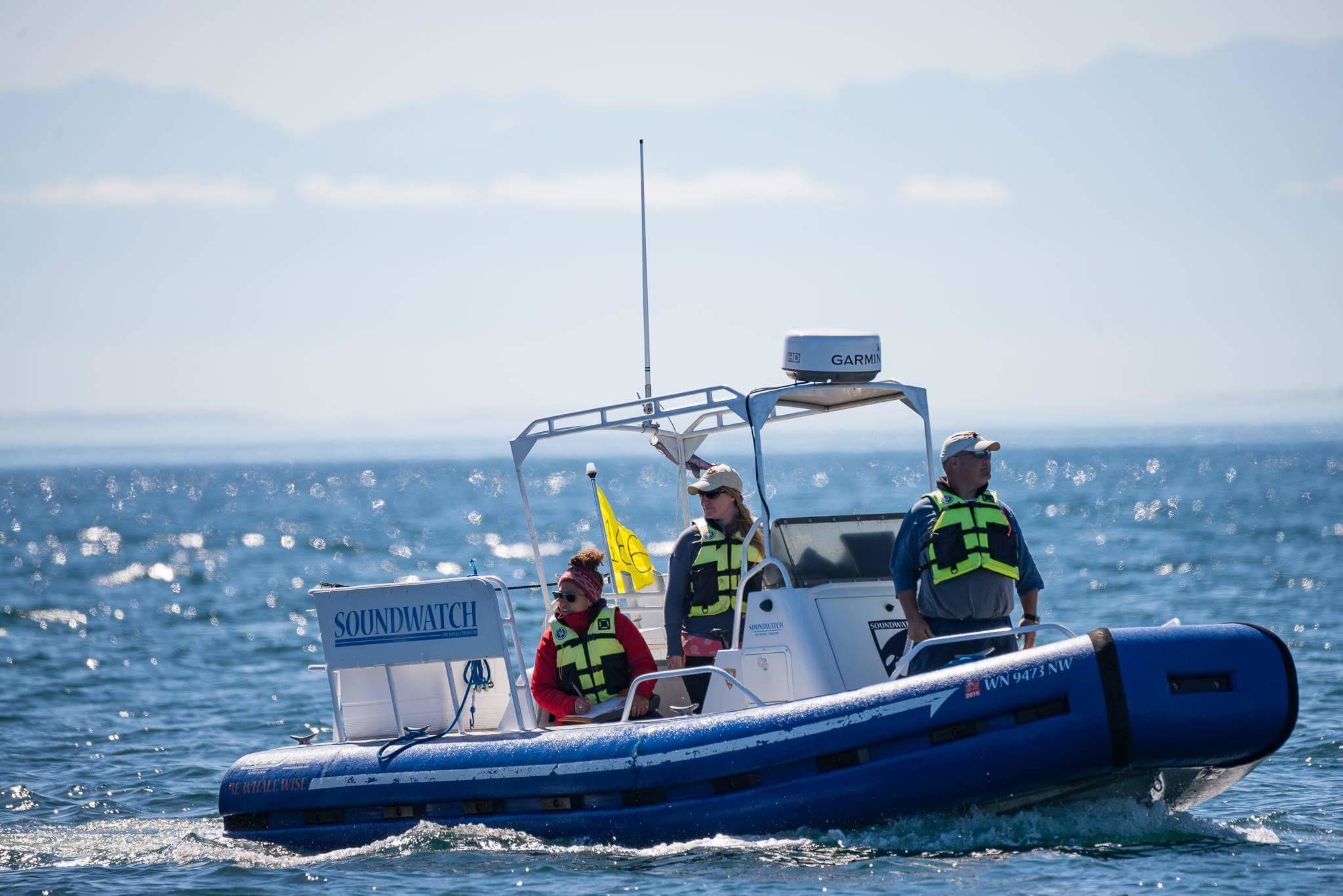Regulations that force boaters to give local, endangered whales more space have protected the orcas and not hindered the whale watch industry.
The National Oceanic and Atmospheric Administration staff made this conclusion in December, after analyzing the last five years since the rules were adopted.
Enacted in 2011, the laws require vessels — both commercial and recreational — to stay as far as roughly two football fields from the Southern resident killer whales and 400 yards out of their apparent path.
NOAA reports that disturbance from vessel noise is one of the primary threats to the Southern resident killer whales, which have historically called the waters surrounding San Juan Island home. Research shows that orcas spend more time traveling and less time searching for food when vessels, including kayaks, are near. Vessel noise can also hinder their ability to find food, which they do by listening to underwater vibrations reflecting against objects.
The local orcas reached their lowest numbers in decades at 78 in 2016, while in the 90s there were close to 100.
Val Veirs has been tracking sounds made by Southern resident killer whales for about 30 years using underwater software around San Juan Island. He said most noise disturbance comes from large commercial tankers, not smaller boats often used for whale watching. Whale watch boats, he said, typically aren’t that audible because they are usually stopped or traveling slowly when orcas are near, while larger boats are moving quickly.
“Large vessels, from a kilometer or two away, make noise for about a half hour or 45 minutes,” said Viers.
Yet, the local whale watch industry is thriving, despite the vessel regulations. NOAA reports that whale watch boats have increased from 76 in 2010, to 96 today; 57 are Canadian ships and 39 are American.
Jeff Friedman, U.S. president of the Pacific Whale Watch Association, attributes this growth to rises in different marine animals visiting the Salish Sea. Today, he said the focus of local whale watchers isn’t solely on Southern resident killer whales, but other species like their transient cousins and humpback whales.
Annual revenue from the San Juan County’s lodging tax, which travelers pay for accommodations like hotels, has also increased 40 percent since 2011, proving that the local tourism economy is rising. NOAA also reports that the whale watch industry contributes $58 million to the local Puget Sound Region economy, annually.
Friedman said that’s not just good business, but also marine life.
“The real positive here is that the more people who connect to the whales and ecosystem, the more will become advocates for conservation,” he said.
PWWA member companies span 19 different ports in Washington and British Columbia and create their own peer-enforced rules to protect marine animals, beyond federal regulations. Friedman said this includes slowing down vessels when they are near any whale species.
“What people forget is that we are leading the responsible whale watching,” he said. “We’re developing best practices, which are modeled around the world.”
It’s the commercial boaters, like whale watch companies, who are typically more knowledgeable of the rules, reports NOAA, and therefore less likely to break them.
The Whale Museum’s Soundwatch Coordinator Sadie Youngstrom said recreational vessels, which the boater education program focuses on, are hard to reach.
“Many … are just passing through the Salish Sea and may not be repeat boaters in the local waters,” said Youngstrom. “Educational outreach needs to reach all ages and out-of-state boaters.”
A 2015 Soundwatch report found that 47 percent of vessels contacted by program coordinators were unaware of the rules. In 2017, recreational fishing boaters often told employees of the program they learned about NOAA’s rules through fishing regulations pamphlets.
Youngstrom said information on vessel regulations are not distributed when boats are registered nor during the state-mandated boater education course, which is necessary for most boat owners.
Soundwatch promotes federal vessel regulations through a campaign called “Be Whale Wise,” which uses materials like pamphlets, posters and billboard advertisements to spread conservation messages. The campaign was started in 2002 by the National Marine Fisheries, which is an agency of NOAA. However, Youngstrom noted that a change in mindset is as crucial as education.
“More brochures and posters have been distributed all over the Salish Sea,” she said. “The bigger challenge is to try to reach people who don’t see how their vessel can impact whales.”
NOAA reports that enforcement of wildlife viewing guidelines was voluntary until the adoption of Washington’s first vessel restriction law in 2008. This enabled law enforcement to be used in patrols. NOAA and Washington Department of Fish and Wildlife have also secured more funding to increase enforcement in recent years. As a result, 598 boaters were contacted in 2008, resulting in three citations, compared to 2,200 in 2015, resulting in 20 citations. Soundwatch reported that 13 percent of boaters contacted in 2011 were repeat offenders.



